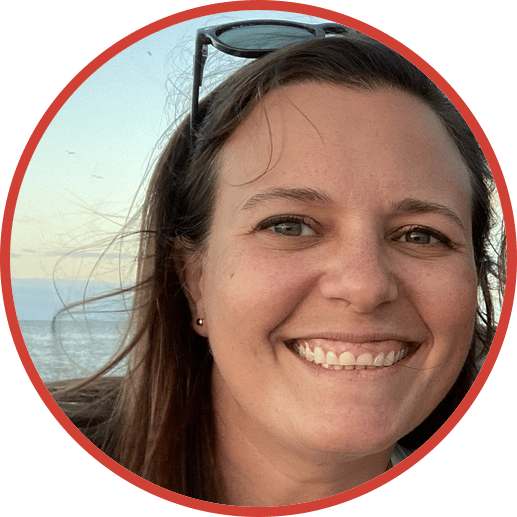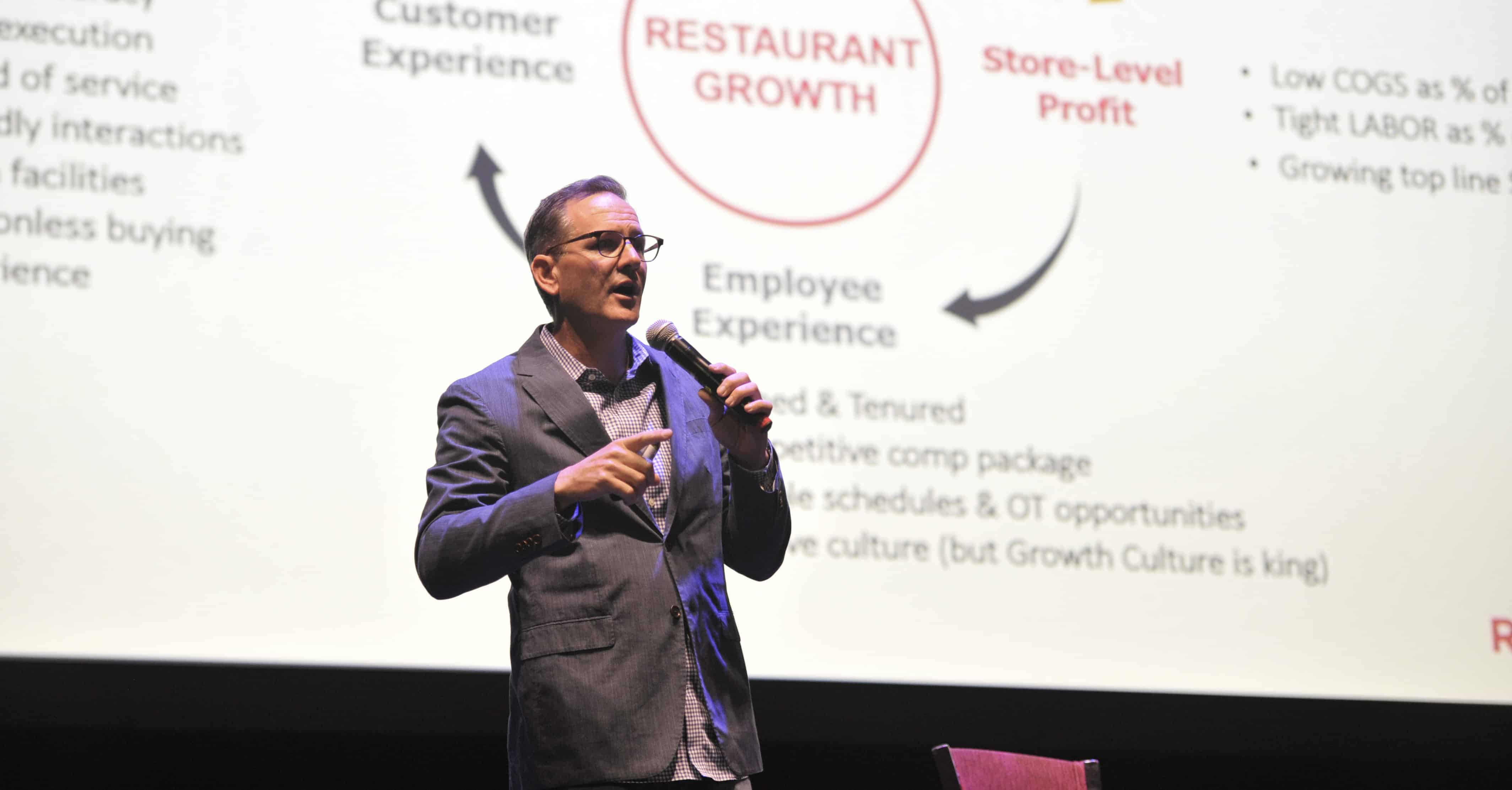
Morgan Harris is Co-Founder and Chief Customer Advocate at Restaurant365 where he supports large accounts, strategic partnerships, and works on executive level sales. He has worked in accounting since 1998 and earned his CPA license while working with PwC as an auditor. Morgan is passionate about restaurant accounting software and R365’s positive impact on the restaurant industry and he eloquently shares this message everywhere he goes. He holds an accounting degree from Brigham Young University. In his free time, he enjoys golf, biking, traveling, skiing and snowboarding as well as spending time with his wife and watching his five kids play any and every sport.

What inspired you to start Restaurant365, and how does it differ from other accounting software solutions on the market?

John, Tony, and I were re-selling Microsoft Dynamics GP accounting software prior to starting Restaurant365. For over a decade we had been helping businesses of all kinds upgrade their ERP software so they could scale their business. What we were doing had a major impact on our customer’s business in a positive way. The trouble for us was that every time we sold a new deal, the customer was in a different industry. So, although it was fun to keep learning about 100’s of different ways companies make money, we could rarely (if ever) leverage things we learned from one job and apply it to the next. Basically, we were a custom dev shop. The day came when we were looking to focus our efforts on a single industry and continually build upon our experiences so that we could go deeper and broader into our customer’s needs and really make an even bigger impact on them. Restaurant365 is the world’s first (and currently only) ERP software for the restaurant industry. Because this has never existed before, we gave it its own name – Restaurant Enterprise Management software (REM). It has 1,000’s of restaurant specific features and that number is growing – and will continue to grow and evolve in lock step with the ever-changing way restaurants operate in the food service industry.

Can you describe a particularly challenging implementation you’ve worked on, and how you overcame any obstacles?

One of the first customers we had back in 2004 was a fine-dining concept in NYC. A very well known operator in the city with a somewhat celebrity chef. The stakes were high for us because success meant a very well known referenceable customer and failure would certainly be a stain on our emerging reputation.“ (Queue the song from Frank Sinatra – “If you can make it there, you’ll make it anywhere. . . . . .” –or “If you fail in there, you’ll fail everywhere . . . . . “) Early on, the technology we were using was pretty basic and part of a good user experience depended on a solid internet connection. We came to learn that restaurants often don’t pay for premium bandwidth. Also, our customer had very old techonology in their back of house offices at their stores. They had state of the art ovens and grills but ancient tower computers with outdated operating software. We had a problem on our hands – so, we looked on the horizon and thought about a solution. I struck a deal with them – if they would up their internet connection, we would run down to Best Buy and buy them new machines with the latest operating software in order to make the user experience acceptable. And so it was I jumped on a plane from California, flew to NYC, took an uber to Best Buy, loaded up 3 computers in a cart and stuffed them into a cab and drove to Altamarea’s offices and dropped them off. The two moves made a huge difference and ultimately grew into a wonderful success story that we leveraged dozens and dozens of times for reference calls for new prospects.

How do you ensure that the technology solutions you implement align with a company’s specific business goals and objectives?

We pride ourselves in asking lots and lots of questions in our discovery calls and being excellent listeners. Now, truth be told, we have the deck stacked a little in our favor because we continue to build upon our experiences as we have implemented 1,000’s of customers at this point and most restaurants experience similar challenges as they pass through the stages of growth. But, we never take that for granted (or we try not to) even when many times we want to finish our customer’s sentences.

How do you stay current with the latest technology trends and developments in the accounting industry?

We keep our eyes on the horizon and our foot on the gas pedal. We pay close attention to innovations happening in these arenas outside of the hospitality space and we ourselves innovate as we respond to the voice of our customers. Compliance and business challenges continually provide us with opportunities to innovate.

Can you share an example of a success story of a restaurant/hospitality company that has seen improvements as a result of implementing Restaurant365?

So many. One of my favorite stories is from Bruce Nelson, CFO of Nova Restaurant Group out of Minnesota. He presented the idea of implementing Restaurant365 to his ownership group in this way – “Are you OK if we spend an additional $250k next year in compensation to our managers? Because if we implement Restaurant365, our stores are going to be so much more profitable than they are today that we will have to pay out at least that much more in profit sharing to our managers based on our current compensation agreements with them.” The board looked at each other and said, “That would be a win-win. That’s way they are designed the way they are.” And so it was. After the first year, indeed, their stores had become so much more profitable through cost of goods sold cost control and visibility into store performance throughout the month that their managers were paid handsomely more than the previous year. Which won the hearts and minds of all parties.

How do you approach training and onboarding for companies that are new to using ERP/accounting software?

We have learned so much in this area over the years. And I must say, we continually look to improve every chance we get. It has helped that our software has become more mature over the years. With something so transofmative as accounting, it is absolutely necessary that the customer and our CS team work hand-in-hand. We have become experts at collaborating and communicating with our customers during this process. We automate what we can, we follow-up like our life depended on it, we teach with patience, precision, and passion, and we push to help the customer get value from our software as quickly as possible. There is so much more I could say about this. One quick final comment is that we measure our success with this as much as we measure anything in our business. Our customers having an excellent onboarding experience is at the top of our priority list and our retention metrics definitely prove that we handle our business in this regard. We will never stop improving but we are very proud of where we are.

How does Restaurant365 support the unique needs and challenges of the restaurant/hospitality industry?

One of the things that really sets us apart is that we simplify our customer’s tech stack. Restaurants use 100’s of different pieces of software to operate. They also use loads and loads of spreadsheets. And where there isn’t software or a spreadsheet, they hire a person and they hand them a pen and paper. Combine all of these things and pretty soon, the arteries of the restaurant group as a whole are completely clogged. Information isn’t accurate, isn’t available, and expensive for the little they do get. Enter R365. Our unique offering elimantes so many touch points for our customers. Information flows seamlessly from/to the POS, Vendors, Banks, and payroll systems. I could write a book about all the specific ways we do.

Can you share any insights on how companies can maximize the use of their accounting software to improve operational efficiency and drive profitability?

My immediate response to this question is two-fold: first, in inventory and second, through open-book management at the store level. Let’s talk inventory first. Inventory is literally cash on your shelves. Every time you touch your inventory, you are making a journal entry in your accounting system. So why not have them in the same piece of software? R365 is the only software in the world where these two things are one and the same. This unification allows complete accuracy and transparency with the organization which allows management to hold teams accountable, see problems as they arise and not after they have caused irreparable harm. Secondly, with the real-time flow of information, it creates the opportunity to provide Prime Cost financial visibility in the hands of the decision makers at the stores. Manager’s are typically bonused off of a store’s monthly prime cost results. So, by opening up the books for managers and letting them take the reigns of their numbers during the month (without loosing control maintained by the accounting department) you allow your managers to become true operators.

If you were a restaurant dish, what would you be and why?

A pizza because it is so versatile.
Pinar Alptunaer is Partner Marketing Manager at Restaurant365, managing relationships with accounting channel and strategic partners. Pinar also manages sponsorships for R365 events like the Restaurant Transformation Tour. With over 20 years of experience working in the hospitality industry, she continues to keep her finger on the pulse by working The Masters Golf Tournament for the past 11 years. A New Orleans native, Pinar grew up between the United States and Istanbul, engraining her love of all things food and hospitality.

If you are a Restaurant365 partner and interested in participating in a partners interview, please reach out to Pinar Alptunaer at palptunaer@restaurant365.com.



